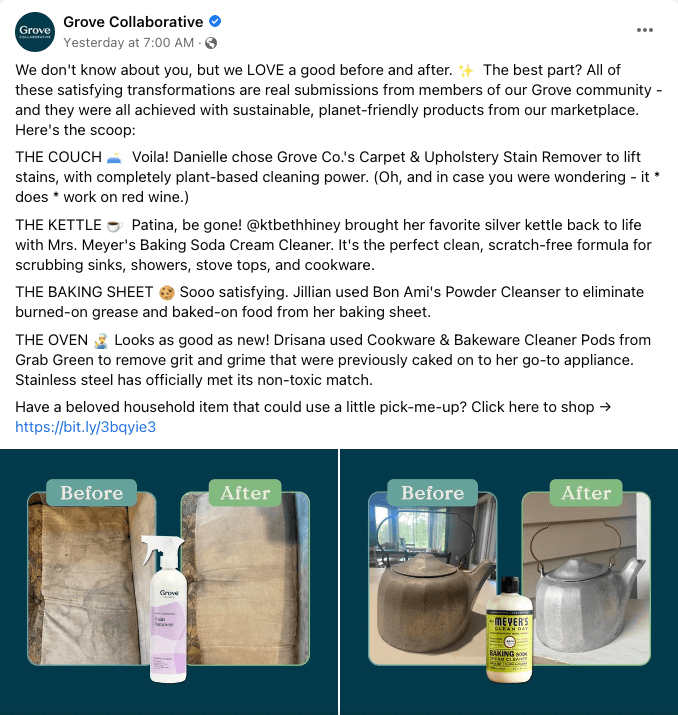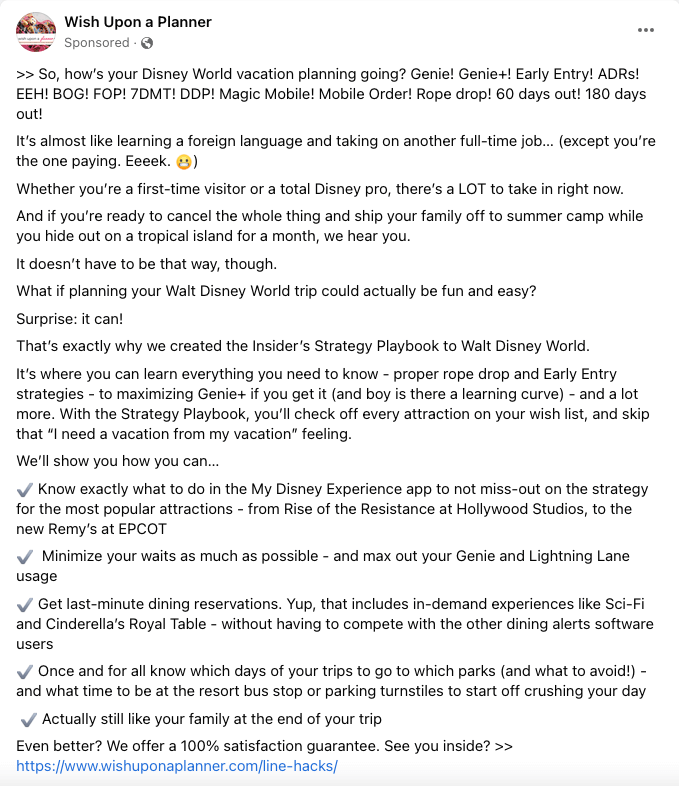Do you want more sales? When did you last revisit your messaging?
In this article, you’ll learn a framework for writing persuasive copy that delivers results in today’s FOMO-saturated climate and discover a method to fine-tune your copy so you hit just the right tone.
Why Has Writing Copy Changed?
From 2020 to 2022, our entire working world changed. It wasn’t just the switch from live to digital, office-working to remote, in-store shopping to online, although the pandemic surely has accelerated the pace of tech innovation.
There’s been a bigger change in the zeitgeist. We’ve all been through the experience of a global pandemic together and it’s changed how we empathize and communicate with each other. We’ve been forced to make big behavioral changes to protect each other such as wearing masks and going into quarantine. And we’ve become tired of fear when we write copy.
That’s not to say that fear has lost its power. Fear is still a strong motivator and it’s still a popular tool in copywriting. It’s also still possible to sell by offering people an “us versus them” mindset.
But there’s a new, different way to approach copywriting. We’ve had enough of fear and division. For the collective health, wealth, and well-being of everyone on the planet, we need to move on.
This might sound pretty idealistic for an article on how to write copy. But at its heart, copywriting is about persuasion. It uses people’s experiences and emotions to encourage belief in a product or a service. That means that copywriters have to be in touch with the zeitgeist. We have to know how people feel and be ready to adapt.
Good copywriting is powerful, and as we all know from the movies, with great power comes great responsibility. Let’s take a look at how that works in practice.
You Might Also Like: Crypto Fears: Celsius Network Freezes Deposits

Photo by Andrew Neel
Write Copy With the PASTOR Framework
One example of the new approach to copywriting is the PASTOR framework, developed by copywriter Ray Edwards.
Fear-focused copywriting can be summed up as “the wolf at the door.” It works by making people afraid of something—the big bad wolf, the missed opportunity, the bad outcome.
The PASTOR framework replaces the wolf with a shepherd. It guides people, like a pastor or a shepherd, toward positive decisions that will benefit them.
Because copywriters love lists, it breaks down into a step-by-step method for writing copy, too.
P: Person, Problem, Pain
Every piece of copy has to start with the audience.
- Who is the person you’re writing for?
- What problem can you solve for them?
- What pain does that problem cause them?
Let’s look at those three points a bit more closely.
First, even though you’re presumably speaking to a wide audience, you should write as if you’re speaking to just one person. Have an individual in mind. Speak to them directly and make them feel seen.
Second, there’s a difference between pain and problem. The problem describes their situation; the pain is how they personally experience it.
For example, when someone is booking a vacation, their problem is “logistics.” But no one says, “Ugh, these logistics are a nightmare.” They say, “Ugh, I have to call the hotel ahead of time and I need to text my partner the reservation number and I’m not sure what time baggage drop-off opens…”
That’s the pain. That’s the experience you want to empathize with. Remember, you’re not trying to push fear onto people. You’re trying to understand how they feel and support them from there.
A: Amplify and Aspire
Now that you’ve put yourself in the reader’s shoes, you want to do two things:
- Amplify the pain. Turn up the volume on those complaints. Make people aware of their problems.
- Aspire for something better.
To go back to our vacation example, you could remind people of how it feels to miss a flight, forget a booking number, or lose your suitcases. It’s frustrating, complicated, and ruins the break.
Once you’ve amplified the pain, you can offer an alternative. Paint a picture of a better experience, where everything runs smoothly and you always have the right information at your fingertips. Now you’ve given your audience something to aspire to.
S: Story
So we’ve got a customer, their problem and their pain, and a vision for the future. It’s a pretty strong sell already.
But you’re going to hammer the point home by telling a story. Specifically, you’re going to tell a story in three parts:
- Struggle. Tell your own story or someone else’s story of the problem in question, offered as a testimonial. This could be anything from your quest to get fit, to a small startup’s quest to find better accounting software.
- Solution. Explain the solution you discovered and how it solved the problem and removed the pain.
- System. Prove that this solution wasn’t just a one-off. It’s a system—a process, a service, a product, or a course—that other people can access, too.

The “system” part of the story is essential. You can read about someone else solving their problems and think, “Great! Good for you!” But there’s no guarantee that the same solution will work for you.
Persuade readers that the solution will help them, too. Whether it’s a new product, a more efficient service, or a course that will teach them the secrets of entrepreneurship, it should be available to everyone.
T: Transformation and Testimony
When someone goes from having a problem to finding a solution, they’ve been through a successful transformation. People love hearing about transformations.
When you want to sell people on a transformation, there are two things you can do.
First, ask people what their transformation would look like. If they could get rid of this pain point, what would their life look like? Maybe they’d earn more money, feel better about themselves, or have more free time. Invite people to imagine a better life.
Second, show them the proof of someone else’s transformation. There are lots of ways to do this. Before-and-after photos are always popular. You can also ask for testimonials where people describe how their life changed; for example, the skills they learned during a course and how those skills have transformed their business.
O: Offer
So far, you’ve done a lot of empathizing and storytelling. Now it’s time to get down to brass tacks.
Never lose sight of the details of the offer. Your audience needs to hear the specifics of what’s on sale: how much it costs, how it will be delivered, how long it will take, and so on.
Don’t forget that you’re still selling the transformation, too. The transformative power of your offer should be listed right alongside the technical specifics.
You can use the F-A-B rule of thumb to check that your offer is comprehensive:
- Features. What does the service or product include? How does it work? What does it cost?
- Advantages. Why is your offer better than the competition? How are you going to make it easier or more accessible for your customers?
- Benefits. How will this offer transform your customers? How will it solve their problems? Which pain points will it remove?
R: Request a Response
This final point is where many copywriters lose the sale.
Why?
Because they forget to request a response.
Someone could read through your copy – the empathy, the story, the attention-grabbing transformation, even the detailed offer – and nod along. It all sounds great to them. But they have no idea how to take action.
Tell your readers what to do next and exactly what that next step will look like.

Explaining the next step is a great way to reassure people that they’re making the right decision. So, for example, when you encourage people to click a button that says “sign up now”, you should tell them exactly what the signup process involves. That way, customers can trust that they won’t be taken down a rabbit hole of extra paperwork, upselling, and distractions. Keep it simple.
How to Edit Your Copy to Be More Effective
No copywriting strategy would be complete without an editing phase.
It’s always a good idea to check and double-check your work, and use editors and proofreaders, if possible. But if you really want to write more empathetic and effective copy, then there are some extra editing tricks you should use, too.
Actually Talk to Your Customers
Remember when we talked about really understanding your customers? Writing as if you were speaking to an individual person?
You’re not going to achieve that with educated guesswork. If you want to write directly to your audience, you have to speak directly to your customers.
Get on the phone or schedule an online meeting and talk to your target audience. Find out what their pain is. Get into the details of their problems. You’ll find it much easier to write truly empathetic copy.
Don’t Just Get Feedback From Editors
Copyeditors and proofreaders are the unsung heroes of good copy. But their job is to focus on the technical aspects. They don’t know any more about your audience than you do.
That’s why it’s worth getting a non-expert to read your copy from time to time. Choose someone who knows nothing about what you’re selling and nothing about copywriting or editing, either. Ask them to read your copy and tell you what they think.
Use the CUB Method
Here’s one more editing tactic that’ll make your copy a lot more direct and relatable. It’s best if you can recruit actual customers or people from your target audience. Avoid other copywriters; you want an unfiltered, untutored response.
The CUB critique method is very simple. (It was developed by copywriters Mike Palmer and Michael Masterson in their book Copy Logic.) Ask people to read through the copy and think about three things:
- Confusing
- Unbelievable
- Boring
Whenever they read something confusing, hard to believe, or simply boring, they should circle that phrase and mark it up with a C, a U, or a B.
This makes it really easy for you to scan through the copy and identify what needs changing.
The CUB method works because it picks up on the three most common errors in copywriting. When the copy is bad, it’s almost always because it’s confusing, unbelievable, or boring.
CUB is also particularly relevant for the new copywriting framework we’re talking about in this article because it’s directly related to the question of empathy.
If your copy is confusing, then you’ve failed to explain the offer. If your copy is unbelievable, then you have failed to empathize. You’ve focused on the wrong pain points or you’ve offered impractical solutions. And if it’s boring, then you’ve failed to tell a story of transformation.
But if you’ve got things right, then your copy will be clear, attainable, and exciting. And most of all, it will empathize with your audience’s pain. That’s the source of real connection.
#writecopy #copywriting #steelbluemedia #socialmediatips #digitalmarketing #marketingdigital
Article courtesy of Social Media Examiner, by Michael Stelzner



